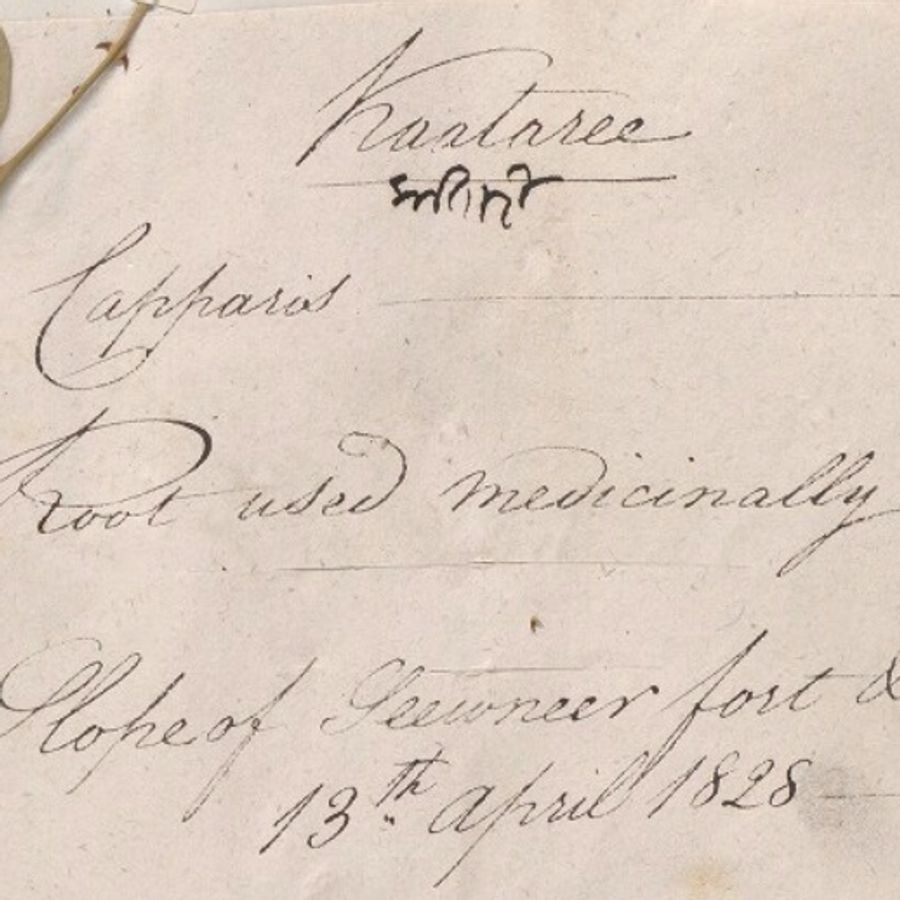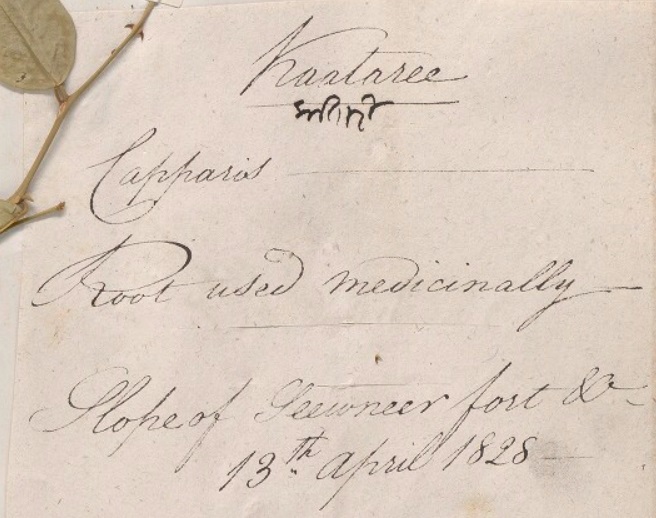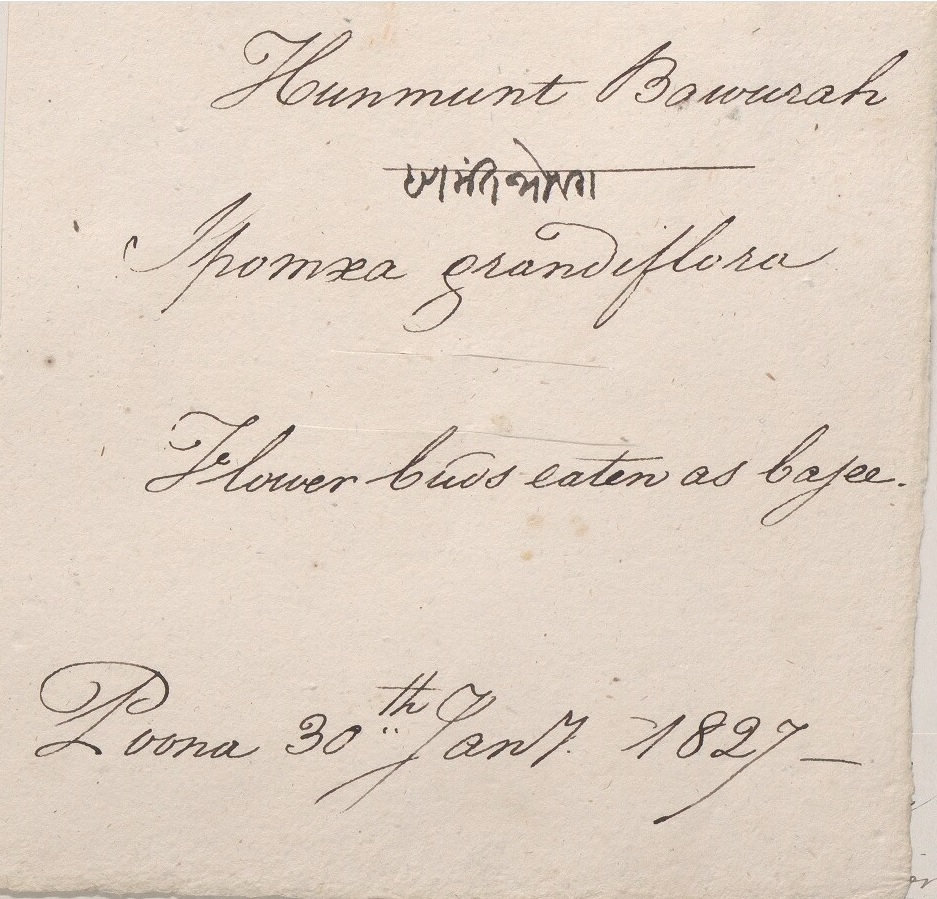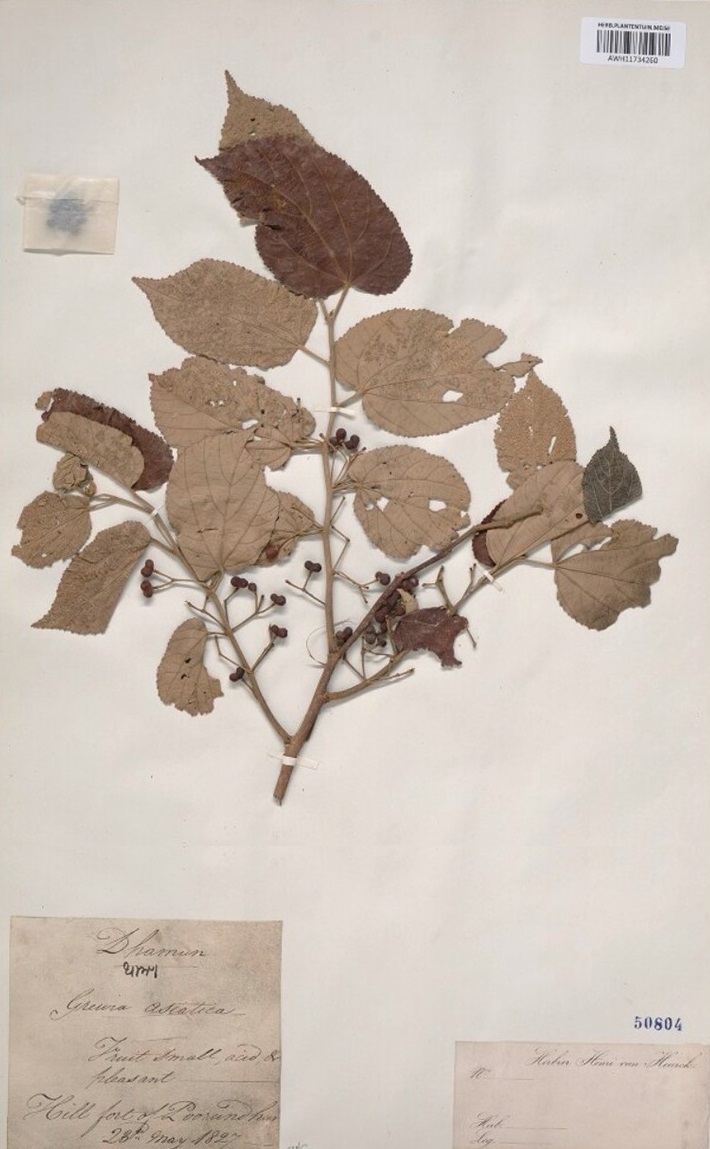
[Science News] - Extraordinary 19th century ethnobotanical herbarium from India
The Botanic Garden has collections of particular botanical, historical and heritage interest. The Herbarium Henri Van Heurck (AWH) conserved at Meise Botanic Garden houses an ethnobotanical herbarium of 258 specimens from the state of Maharashtra (India) collected between 1826 and 1830.
What do the labels tell us?
The information on labels is written in fine handwriting. Notable is the presence of text in Devanagari script. The name of the collector is missing. Apart from the scientific name (Latin) of the plant, the vernacular name (= local) in Marathi (official language of the state of Maharashtra) is also written on the label. Notable is the addition of the vernacular name in the Devanagari script.
Above the vernacular name in Devanagari is a transliteration of these characters in Latin script. This transliteration is academically incorrect but is as Britons pronounce it.
Also listed are the use of the plant (or plant parts), its location (both collected in gardens and in the wild) and the date (day, month and year).
Where does the herbarium come from?
This herbarium was compiled by William Henry Sykes (1790 - 1872). Sykes was an officer in the British colonial army in India. He was a politician, statistician, indologist (spoke and wrote Hindi and Marathi) and naturalist. He was mainly interested in ornithology, but had a broad interest in nature as well as meteorology.
He stayed in Pune (Poona on the labels), where he also collected among other things in his garden ("my garden"). Several places where he collected were military forts: Purandar (Poorundhur on the labels), Hurreechundurghur and Shivneri (Seewneer on the labels).
The plants or plant parts collected were used in medicine, as a food crop (fruits and vegetables), as a spice for cooking, in religious rituals, dye plant or as an ornamental plant, shrub or tree.
Herbaria of this kind are undoubtedly invaluable archives for our knowledge of plants and traditional knowledge.
Thanks to UGent professors Eva De Clercq (Indology) and Daniela De Simone (Indian ethnobotany) for analysis of the Devanagari and comments on transliteration.
 |
 |
|
Capparis sp. (related to the caper plant). |
Ipomoea grandiflora. “Flower buds eaten as bhaji” (type of fritter). Pune |
 |
 |
| Hibiscus sp. “The root used in preparing a white dye. In medicine as aphrodisiac”. Pune | Grewia asiatica. “Fruit small, acid and pleasant”. The fruit is commercialised under the name falsa (or phalsa). Hill fort of Purandar. |



